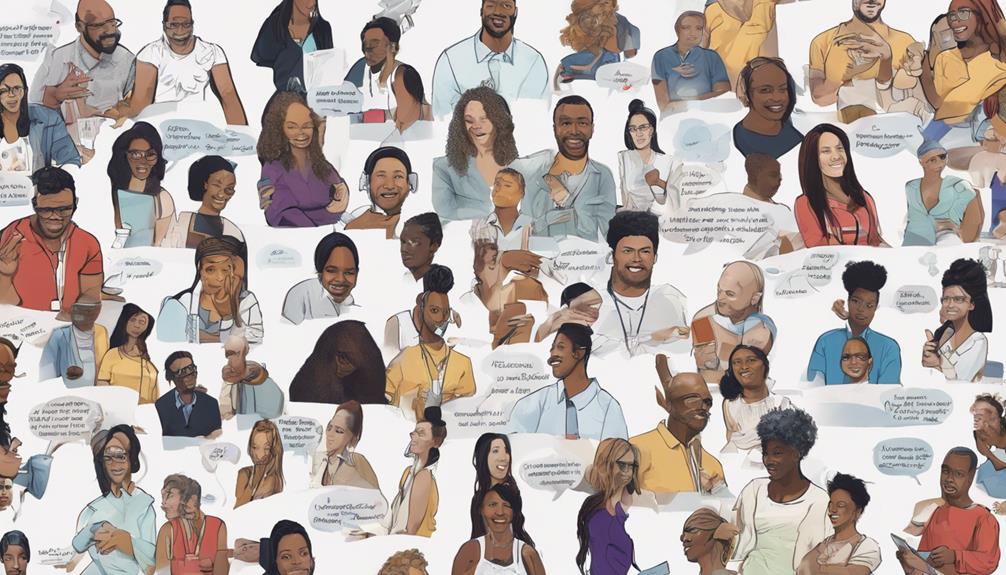Learning a new language after hearing loss is totally doable and can be enjoyable. You can use visual cues like gestures, facial expressions, and written language to communicate effectively. Techniques like sign language and speech therapy help you expand your skills and boost confidence. With regular practice, you’ll find yourself mastering new ways to connect. If you want to explore how to make this journey fun and feasible, there’s much more to discover ahead.
Key Takeaways
- Learning sign language is highly feasible and offers a fun, visual way to communicate after hearing loss.
- Combining sign language with speech therapy techniques enhances overall communication skills.
- Regular practice and immersion make acquiring a new language both effective and enjoyable.
- Exploring new languages fosters personal growth, resilience, and expands social interaction opportunities.
- Embracing language learning post-hearing loss boosts confidence and provides empowering alternative communication methods.

Losing your hearing can feel like a barrier to communication, but it also opens the door to new opportunities—like learning a language in a different way. Instead of relying solely on spoken words, you can explore sign language acquisition, which offers a visual and expressive approach to communication. Many people with hearing loss find that learning sign language not only helps them connect with others but also becomes a fun and engaging challenge. It’s a skill that enhances your ability to express yourself clearly and understand others, even if spoken language feels more difficult. Plus, with the increasing availability of online courses, community classes, and video tutorials, getting started has never been easier. You might be surprised at how quickly you pick up sign language, especially when you practice regularly and immerse yourself in the language’s gestures and expressions.
In addition to sign language, speech therapy techniques are invaluable tools that can help you develop your communication skills. Speech therapy isn’t just for those who want to improve their spoken words; it also encompasses strategies tailored to your specific needs. Therapists can teach you techniques that maximize your residual hearing, such as lip reading or auditory training. These methods can make speaking and understanding speech more manageable, boosting your confidence in social situations. Using speech therapy techniques, you might also focus on enhancing your breathing, voice projection, and enunciation, all of which contribute to clearer communication. The process can be both practical and enjoyable, especially when you see your progress and realize how much you’re capable of achieving.
Learning a new language after hearing loss isn’t just feasible—it can be fun. The process encourages you to think creatively about communication, tapping into visual cues, body language, and written language alongside traditional spoken words. You may find joy in the challenge of mastering sign language gestures or the satisfaction of understanding someone through a new method. Combining sign language acquisition with speech therapy techniques broadens your communication toolkit, giving you multiple ways to connect with others. It also fosters a sense of achievement, as you realize that your hearing loss doesn’t limit your ability to learn and grow linguistically. Instead, it invites you to explore language from a fresh perspective—one full of new skills, engaging interactions, and personal empowerment.
Frequently Asked Questions
Can Sign Language Be Considered a New Language for Hearing-Impaired Individuals?
Yes, sign language can definitely be considered a new language for hearing-impaired individuals. It involves visual communication, allowing you to express ideas through gestures and facial expressions. Learning sign language often requires cultural adaptation, helping you connect with the Deaf community. As you become proficient, you’ll find it’s not just a language but a way to engage authentically, broadening your communication skills and cultural understanding.
What Technologies Assist Language Learning After Hearing Loss?
Ever wondered how you can learn a new language after hearing loss? Technologies like speech recognition help you practice pronunciation and comprehension, making learning more interactive. Virtual tutors offer personalized lessons and feedback, adapting to your pace. These tools empower you to overcome barriers and stay motivated. With the right tech, language learning becomes accessible, engaging, and tailored to your needs, proving that hearing loss doesn’t have to limit your language journey.
How Does Age Impact Language Acquisition Post-Hearing Loss?
Age substantially impacts your ability to learn a new language after hearing loss due to the critical period for language development. Younger brains exhibit higher neuroplasticity, making language acquisition easier. As you age, this neuroplasticity diminishes, potentially making learning more challenging. However, with the right tools and motivation, adults can still successfully learn new languages, though it may require more effort and tailored approaches to overcome age-related barriers.
Are There Specific Methods Tailored for Different Types of Hearing Loss?
You can tailor language learning methods based on your hearing loss type by incorporating visualization techniques, which help you understand and remember words visually. Cultural immersion remains essential, engaging you in real-life contexts to reinforce learning. For example, you might use sign language or subtitles if hearing loss affects auditory processing. Combining these approaches ensures you stay motivated and effectively learn, regardless of your hearing loss specifics.
Can Learning a Language Improve Communication Skills Beyond Hearing?
Think of language learning as planting a garden in your mind. It can grow your cultural understanding and sharpen your cognitive benefits, making you more than just a communicator—you’re a storyteller. By mastering new words and nuances, you improve your ability to interpret emotions and context, enhancing overall communication skills. So, yes, learning a language goes beyond hearing; it deepens connections and broadens your world.
Conclusion
Learning a new language after hearing loss is like planting a vibrant garden in uncharted soil—you might face initial hurdles, but with patience and passion, beautiful blooms emerge. Your determination becomes the sunshine that nurtures growth, turning challenges into opportunities for discovery. So, embrace this journey with curiosity and joy; each word learned is a new brushstroke in your masterpiece of communication. The symphony of language awaits, ready to fill your world with color and connection.











